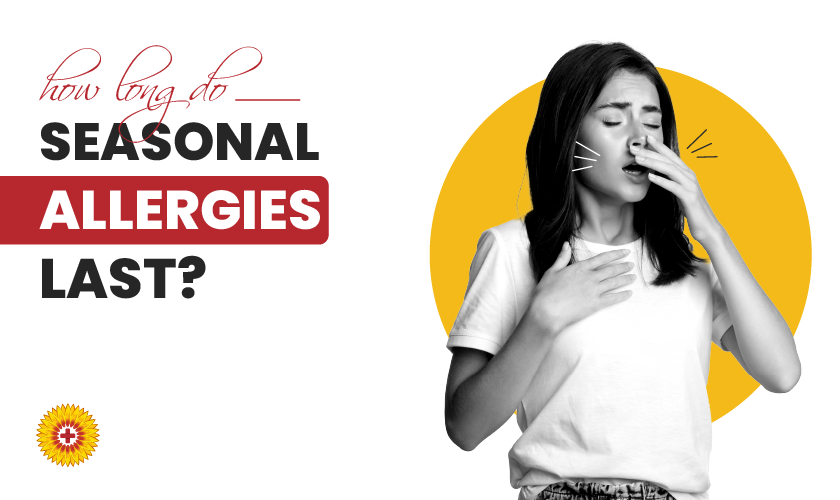Understanding peak seasons for outdoor allergens can help people prepare for and manage their symptoms.
The types and levels of outdoor allergens differ by state due to regional climate, flora, and environmental factors.
This article discusses the most common allergens during the different seasons. It also explains how to take precautions and treat allergy symptoms.
Additionally, Urgent Care of Kansas offers healthcare services for seasonal allergies.
Month For Seasonal Allergy
The months that are worst for allergies differ depending on the location and allergens involved. Spring and fall are peak seasons for allergies in many parts of the United States.
Tree pollen is a common allergen during the spring, particularly between March and May. As trees bloom and release pollen, allergy sufferers may experience sneezing, itchy eyes, and congestion.
Grass pollen can be an issue in the late spring and early summer, exacerbating allergy symptoms for some people.
You may contact us to know more about allergies.
Allergy Symptoms
If you develop a seasonal allergy, you will most likely experience symptoms simultaneously yearly.
Symptoms of seasonal allergies will last as long as the allergens are present.
This occurs because your immune system produces chemical mediators (including histamine) whenever it recognizes an allergen as a foreign invader.
Histamine increases blood flow to the affected area, which causes inflammation.
Histamine triggers the all-too-common symptoms of allergic rhinitis (hay fever), which include:
- Runny nose.
- Common symptoms include nasal congestion and sneezing.
- Itching in the nose, eyes, ears, throat, and roof of mouth.
- Swollen, watery eyes.
Allergens Peak During Different Seasons
Spring
When temperatures warm up, tree pollen is free into the air and can be present until summer. Tree pollen inclines to cause tickly or watery eyes, sneezing, and nasal congestion.
Summer
Grass pollen peaks during summer and can even become aerial from late spring through early autumn. On warm, windy days, grass pollen can be at its maximum. Hot, humid environments also produce an increase in mold spores.
Autumn
During the fall, weed pollen is at its peak, particularly ragweed. But even if you live in an area where ragweed doesn’t grow, wet soil and fallen leaves can increase mold.
Molds are much more common in ambient air than pollens, and some molds are current in high amounts in damp, rainy conditions.
Other molds can peak on days of supreme heat and humidity so that mold counts can get very high in late summer or early autumn.
Winter
Colder weather in many areas is when indoor allergens like mold, dust mites, or pet dander are the most prominent allergens.
Additional Resources:
Conclusion
There’s no cure for seasonal allergies.
Though it’s important to take steps to reduce your experience with pollen and mold and many people also need to take allergy medication.
Seasonal allergies can be a source of significant discomfort and commotion in daily life.
Allergens vary by state and are unfair regarding climate, regional flora, and environmental conditions.
Spring and fall are usually the worst months for allergies, as tree, grass, and weed pollens are prevalent.
Winter and late summer or initial fall can offer some relief, with reduced levels of specific allergens.
To get further support reach out to us at Urgent Care of Kansas.
FAQs
How long does it take for seasonal allergies to go away?
Spring allergies begin in February and last until early summer in many parts of the United States.
Tree pollination starts early in the year, followed by grass pollination later in the spring and summer, and ragweed in the late summer and fall.
How do you get rid of seasonal allergies fast?
Use an over-the-counter remedy.
- Oral antihistamines. Antihistamines can help with sneezing, itching, stuffy or runny nose, and watery eyes.
- Corticosteroid nasal spray. These alleviate nasal symptoms.
- Stay indoors.
- Rinse your sinuses.
- Keep your environment clean.
What are the worst months for seasonal allergies?
Spring and fall are the worst months for allergies due to the abundance of tree, grass, and weed pollen.
What month is pollen the highest?
Tree pollen season lasts from March to June.



No comment